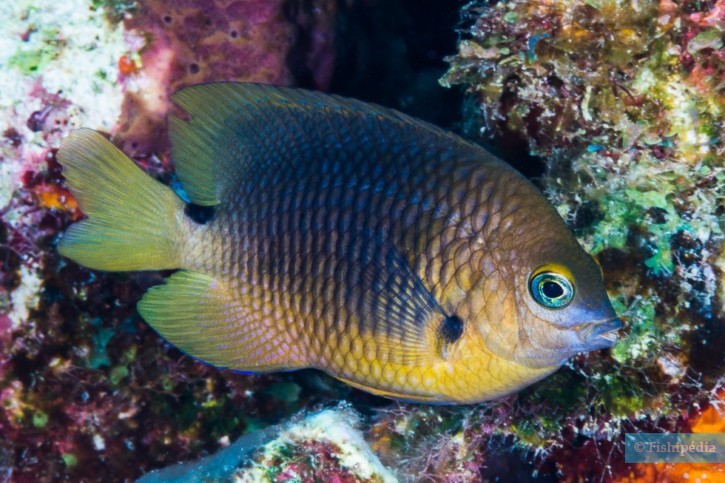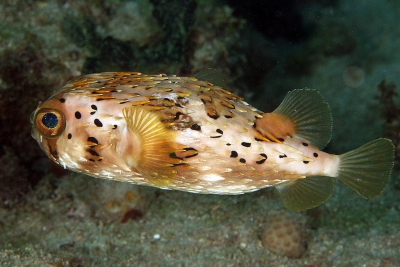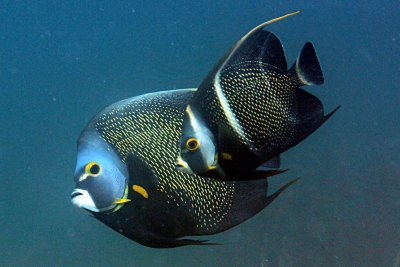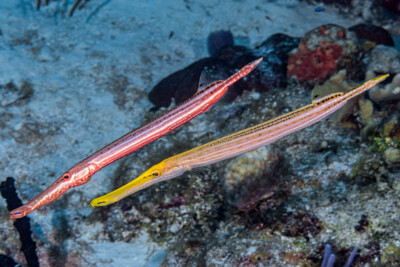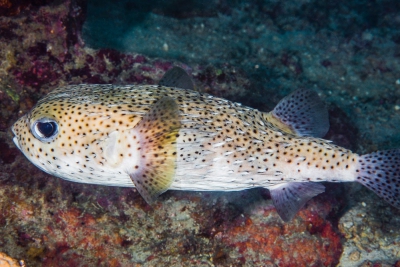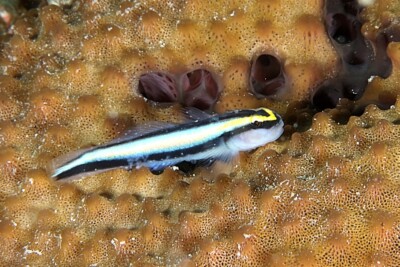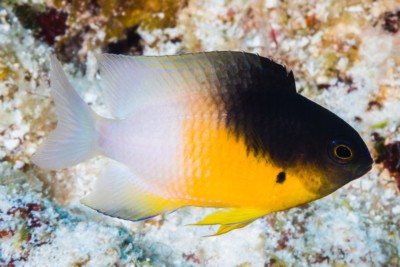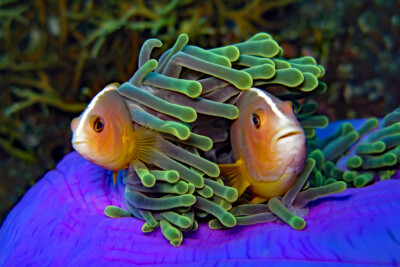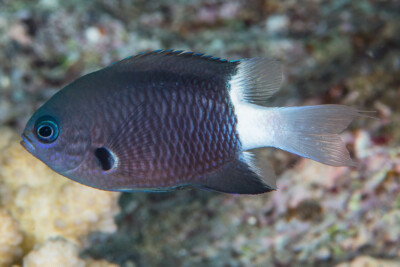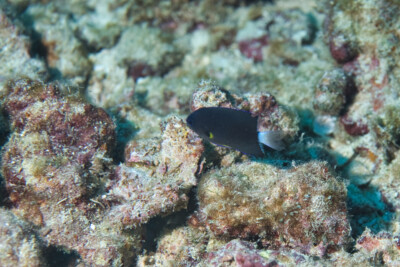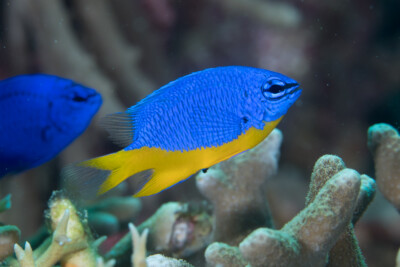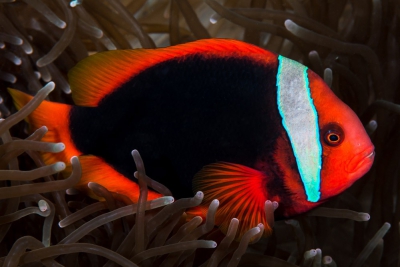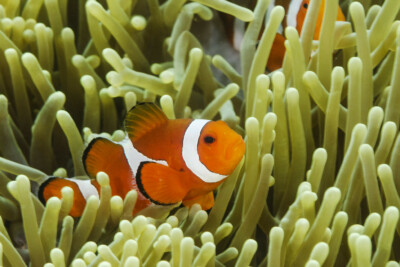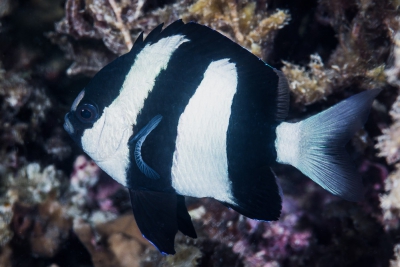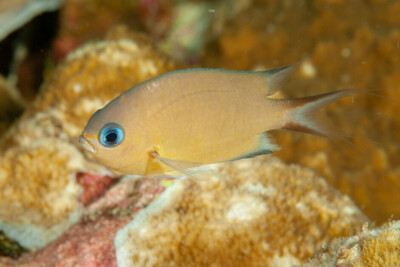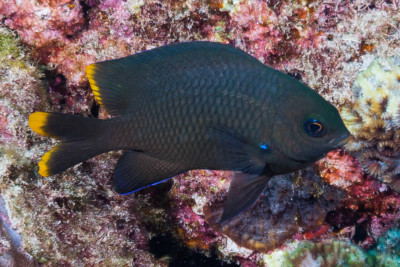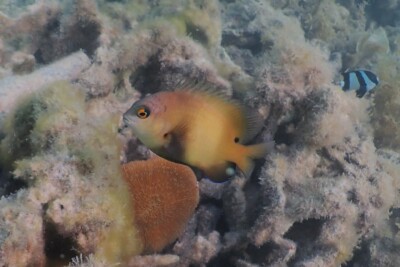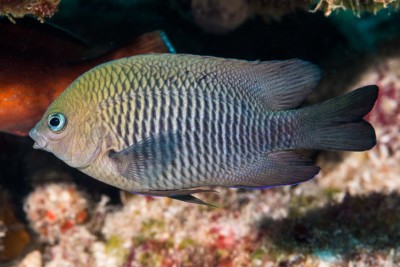threespot damselfish
| Family | Pomacentridae |
|---|---|
| Genus | Stegastes |
| IUCN category (World) | LC |
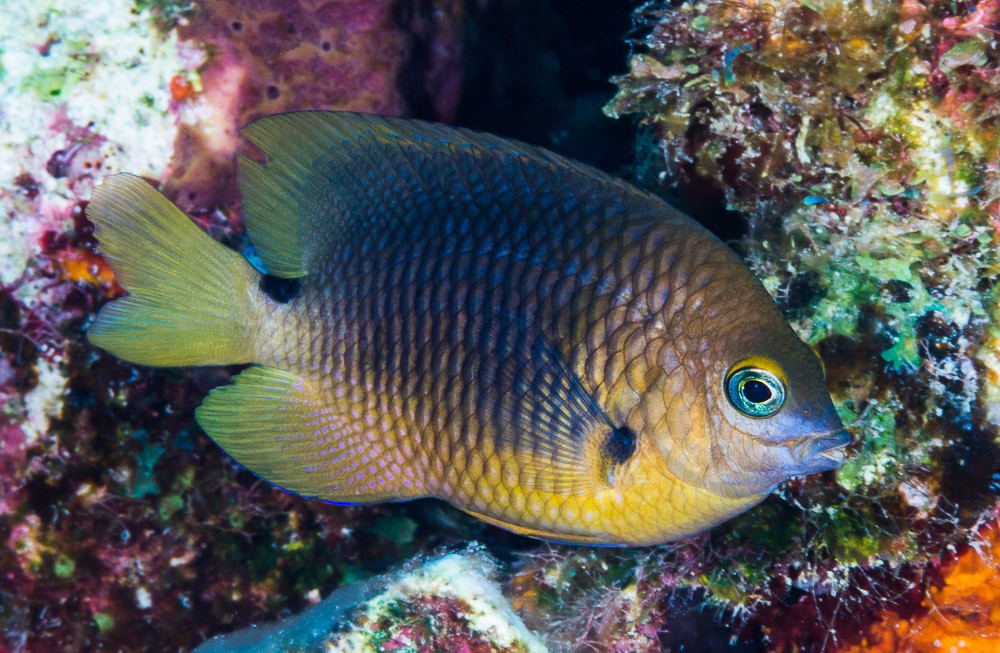

Introduction
Stegastes planifrons, commonly known as threespot damselfish, is a salt water fish.
This sheet is currently being prepared. The texts currently proposed come from our data model or are being drafted. To request priority for this content, you can write to us HERE.
Who is it?
Morphology
-
Average size11 cm
-
Maximum size13 cm
-
Longevity4 year
-
ShapeCircular
-
Average size11 cm
-
Maximum size13 cm
-
Longevity4 year
-
ShapeCircular
How to recognize This fish ?
The threespot damselfish measures around 11 cm. The dominant males can however reach 13 cm. This fish is unicolore with a predominantly marron and gris body.
Sexual dimorphism
The adult male is bigger than the female.
Behaviour & Life cycle
-
dietomnivorous
-
Sociabilityliving as a couple or in a group
-
territorialYes
-
Way of livingdiurnal
The threespot damselfish is a fish living as a couple or in a group naturally found near the bottom. This species is omnivorous .
The threespot damselfish is a territorial animal that does not tolerate any incursions into its living area. It is particularly virulent against other territorial species and it can provoke heated fights. In a constant quest for dominance, the dominant males of this species cannot stand each other. The battle between two individuals can be intense and violent. It will result in the submission and sometimes even death of one of the protagonists.
Reproduction
-
Reproductionovipare qui pond sur substrat découvert
-
Hermaphroditeprotandric
The threespot damselfish is a fish ovipare qui pond sur substrat découvert. This fish always born male. Growing up, individuals will change sex to become female, this is called successive hermaphroditism of the protandrous type.
Harmless species
This species does not represent any particular threats to humans when encountered in its natural environment.
Origin and distribution

Conservation status of populations (IUCN)
What is its habitat?
Natural environment characteristics
-
Temperature22 - 28 °C
-
Depth1 - 30 m
-
FlowMedium
Biotope presentation
The threespot damselfish is most often found at a depth between 1m and 30m. However, it is not impossible to find this species at other depths.
Species of the same biotope
Fishkeeping
Not recommended
We do not recommend keeping this species in an aquarium. It has unpredictable needs which, if not met, generate significant stress, potentially leading to a shorter life expectancy, an interruption of its growth or the development of pathogens.
To go further
Sources & Contributions
Participation & Validation
The Fishipedia team and specialist contributors are committed to providing high-quality content. However, although the information comes from scientific sources or testimonials from specialists, the cards may contain inaccuracies.

Benoit Chartrer
Translation
Translation done with the valuable contribution of our translators, who make this information available to a wider audience. We sincerely thank them for their commitment.
Bibliographic references
- - GBIF
- - The Whitetail Damselfish (Family Pomacentridae), Stegastes leucorus (Gilbert, 1892), New to California Marine Waters with a Key to the California Species of Pomacentridae - Milton S. Love - William Power - Southern California Academy of Sciences - 2016.
- - THE LIVING MARINE RESOURCES OF THE EASTERN CENTRAL ATLANTIC - FAO Fisheries Synopsis - 0.
Scientific partners
Tags
Species of the same family
Same genus
Species of the same biotope
